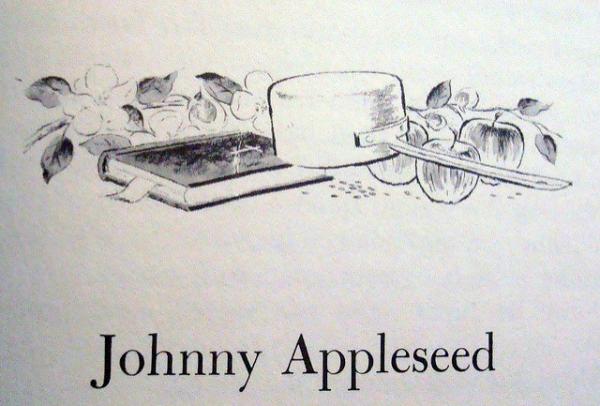In The Botany of Desire, Michael Pollen breaks down the Disneyfication of John Chapman, better known as Johnny Appleseed, pointing out that for apples to become today’s abundant fruit they must be cross-pollinated. Otherwise we're left with a sour, misshapen fruit, unsuitable for eating by only for being fermented.
Yes, the Johnny Appleseed of my youth was, among other things, a cultivator of his era's most common drug, Applejack. Cross-pollination requires not only multiple trees and a pollinator – the bee – that subject of episodic attention. Much has been written on colony collapse disorder [1] and the migratory patterns and theft of commercialized honeybees that move around the country as our domesticated nomads pollinating crops [2]. A new report in Science looks at another factor influencing bees, the landscape.
As a city boy far removed from the source of my foods (and no, the neighborhood supermarket does not count) I would have thought that the great villain was urban and suburban areas. But it turns out that for all their pastoral beauty, agriculturally “intense” landscapes may have a deleterious effect of bee diversity and subsequently impact their pollinating services. The study involved 27 apple orchards with 10 years of data on the pollinator communities present, crop yields, and the changes in landscape “composition” for about 750 meters around them.
The changing landscape
In those years, the surrounding “heterogenous mix of forest, urban, old-field, and agricultural lands” was increasingly dominated by agriculture; the environmental landscape became less diverse. Phylogeny, the study of the physical and genetic differences among species, is the science used to construct those tree of life diagrams. Researchers found that the increasing agricultural land use reduced the diversity of bee species, not in some haphazard, random way like a branch here or a branch there, but instead “pruned” some bee species more than others.
Jargon Alert: Species richness measures how many different species are present. Species diversity calculates not only richness but species' relative abundance. For example, when there are three species equally distributed, and then subsequently one becomes predominant, species richness does not change, but species diversity has decreased. The scientists found that the increasingly homogenized landscape resulted in bee winners and losers, with both a loss of richness and diversity.
Clades (another new word for me) refers to groups sharing a common ancestor; the twigs on a particular branch of the bee tree of life – the phylogenetically similar. In scientific terms, some clades thrived and others did not.
The lesson here is that “mono-scaping” our land – think our nation’s “bread belt” or California’s Napa Valley – may reduce diversity just like the monocultures of our grains. To extend an adage, not only are we putting our eggs into one basket, we are limiting the basket we choose to put them in.
Did the loss of some clades over others affect apple production?
The researchers looked at several measures in both Golden Delicious and MacIntosh apples – "seed set" or the number of seeds within the fruit (more is better); fruit weight; and shape, which is evidently a reliable measure of quality. Loss of diversity resulted in lower fruit weight and seed set. That loss, in combination with the variations in bee abundance, led to more misshapen fruit. So yes, changing the environment results in the resetting of many equilibria between countless parts.
This is not to argue that we should, or should not, alter our environment. As a surgeon, that was my craft and trade, changing a patient’s human environment. But it should give us pause to recognize that our actions have consequences that we may not appreciate, and as a result perhaps tread more lightly.
###
[1] According to Science News, the last verified case of colony collapse disorder seems to have been around 2013 and the continued loss of bees is felt to be due to “the “four p’s” — poor nutrition, pesticides, pathogens, and parasites.”
[2] Bee rustling or theft is a global problem.
Source: Agriculturally dominated landscapes reduce bee phylogenetic diversity and pollination services. Science DOI: 10.1126/science.aat6016




